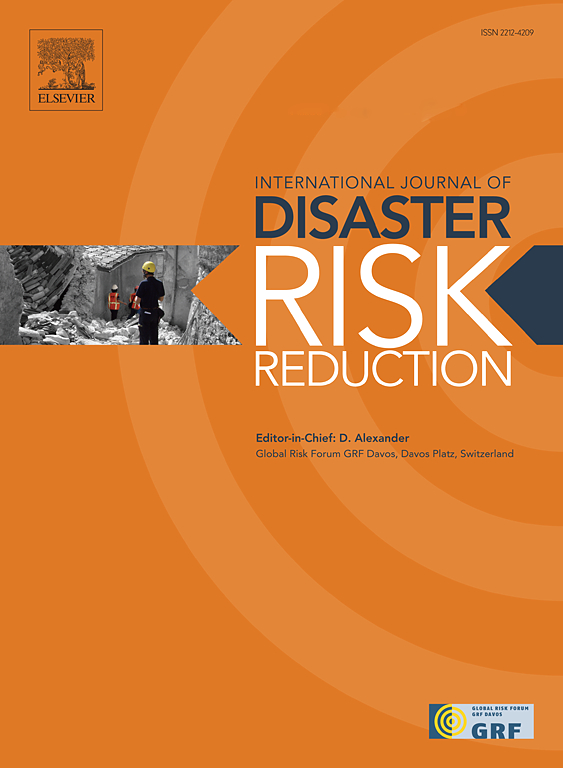Pre-disaster flood prevention funds allocation and benefit analysis considering social vulnerability to enhance urban sustainable flood resilience
IF 4.2
1区 地球科学
Q1 GEOSCIENCES, MULTIDISCIPLINARY
International journal of disaster risk reduction
Pub Date : 2025-02-18
DOI:10.1016/j.ijdrr.2025.105324
引用次数: 0
Abstract
In the context of global climate change and rapid urbanization, floods are increasingly frequent and intense, and the scientific allocation of pre-disaster flood prevention funds is essential for enhancing cities' preparedness for sustained flood protection. However, existing studies often overlook urban social vulnerability in allocating funds for pre-disaster flood prevention and quantitatively analyze the benefits of the allocated flood prevention funds. To solve this problem, relevant indicators like socioeconomic factors, infrastructure, and environmental conditions were used to assess social vulnerability (SoVi). Based on the assessment results, a Disaster Prevention Funding Allocation Model based on Social Vulnerability Assessment (SO-FAOM) was constructed, which aims to reduce the overall social vulnerability index and the number of extremely vulnerable areas. In this model, Geodetector was used to establish a hierarchical quantification mechanism for benefit coefficients across different levels of priority support, and NSGA-II and TOPSIS were employed to solve for the optimal allocation. Applied it to Wenzhou City to obtain the optimal allocation of funds and quantitatively analyze the benefits generated by the funds. Additionally, with the same total investment, the benefits of the Flash Flood Intensity Scheme (FFIS) and SO-FAOM allocation results were compared. FFIS reduced the total SoVi by 4.2 % and the number of extreme SoVi zones by 35.5 %, while SO-FAOM achieved reductions of 5.8 % and 57.0 %, respectively. Results showed that the scientific allocation of flood prevention funds by incorporating socioeconomic factors pre-disaster could help maximize the effectiveness of the use of funds and improve the city's ability to sustain flood protection.

求助全文
约1分钟内获得全文
求助全文
来源期刊

International journal of disaster risk reduction
GEOSCIENCES, MULTIDISCIPLINARYMETEOROLOGY-METEOROLOGY & ATMOSPHERIC SCIENCES
CiteScore
8.70
自引率
18.00%
发文量
688
审稿时长
79 days
期刊介绍:
The International Journal of Disaster Risk Reduction (IJDRR) is the journal for researchers, policymakers and practitioners across diverse disciplines: earth sciences and their implications; environmental sciences; engineering; urban studies; geography; and the social sciences. IJDRR publishes fundamental and applied research, critical reviews, policy papers and case studies with a particular focus on multi-disciplinary research that aims to reduce the impact of natural, technological, social and intentional disasters. IJDRR stimulates exchange of ideas and knowledge transfer on disaster research, mitigation, adaptation, prevention and risk reduction at all geographical scales: local, national and international.
Key topics:-
-multifaceted disaster and cascading disasters
-the development of disaster risk reduction strategies and techniques
-discussion and development of effective warning and educational systems for risk management at all levels
-disasters associated with climate change
-vulnerability analysis and vulnerability trends
-emerging risks
-resilience against disasters.
The journal particularly encourages papers that approach risk from a multi-disciplinary perspective.
 求助内容:
求助内容: 应助结果提醒方式:
应助结果提醒方式:


